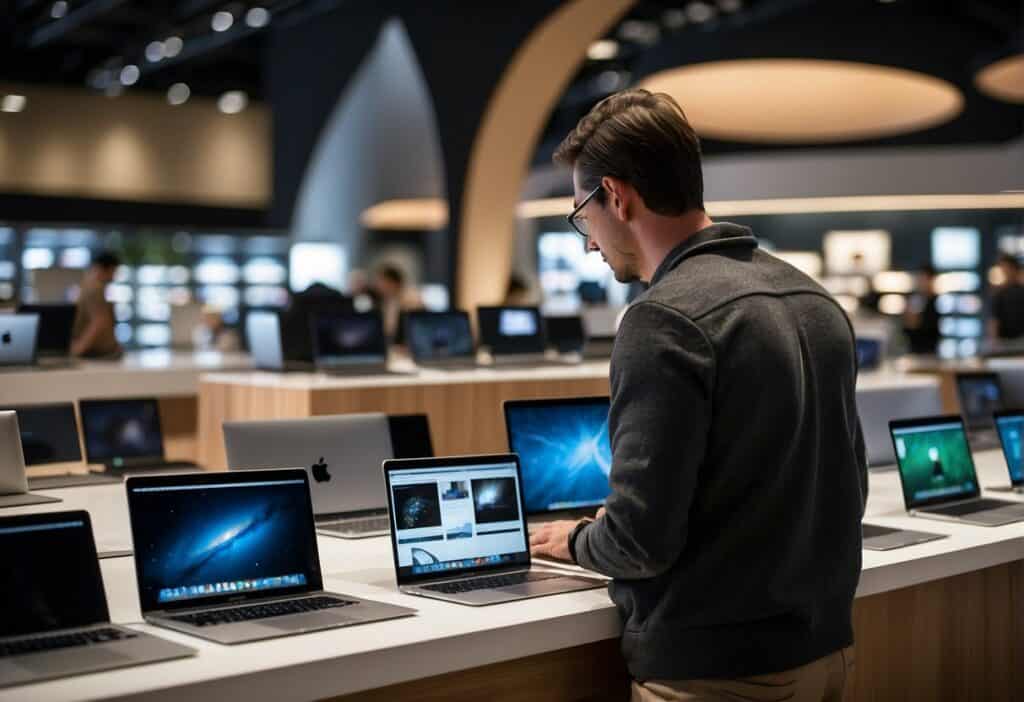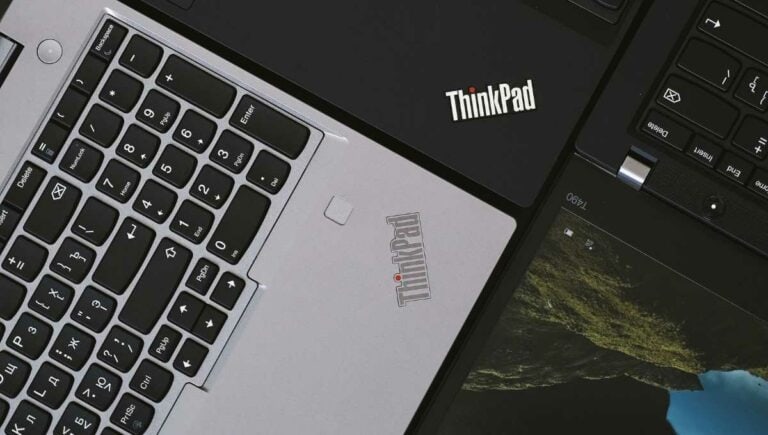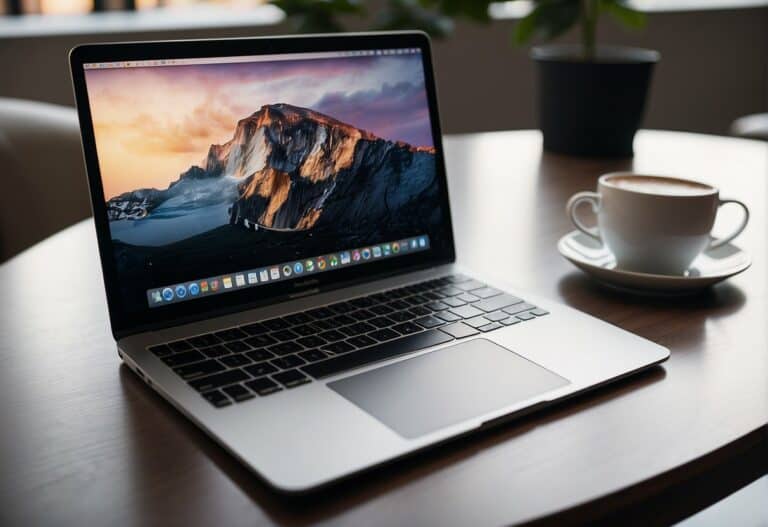MacBook Air for Travel: The Ultimate Lightweight Companion
Travel light and smart with the MacBook Air, your perfect companion for staying connected and productive on the go.

Choosing the Right MacBook Air
When considering a MacBook Air for travel, it’s essential to focus on factors like portability, battery life, and performance capabilities. Making an informed decision will ensure we have a laptop that meets our travel needs without compromising on power or functionality.
Comparing Models
There are several MacBook Air models available, each with its own set of features and specifications. It’s crucial to compare these models to find the one that aligns perfectly with our travel requirements. Apple’s MacBook Air (2024) model presents a balance between performance and portability, with the latest offering significant improvements in both areas.
Here’s a quick comparison table to illustrate the differences:
| Model | Size & Weight | Processor | Battery Life | Storage Options |
|---|---|---|---|---|
| MacBook Air M2 (2023) | 13.6-inch, 2.7 lbs | Apple M2 chip | Up to 18 hours | 256GB – 2TB |
| MacBook Air M1 (2020) | 13.3-inch, 2.8 lbs | Apple M1 chip | Up to 15 hours | 256GB – 2TB |
Italicized specifications are notable upgrades from the previous model.
Specs for Travel:
Portability is king when it comes to traveling with our MacBook Air. The latest models offer a remarkably slim and lightweight design without sacrificing screen size, making them an excellent travel companion.
In terms of performance, the newer MacBook Air runs on Apple’s own M2 chip, ensuring that all our tasks, from photo editing to document creation, are handled smoothly. Moreover, with an all-day battery life that outlasts most travel days, we can work confidently without being tethered to a power outlet.
Storage is another consideration for us travelers. While cloud storage is convenient, having a larger built-in storage capacity is essential for accessing our files offline. Here, a 512GB SSD is a sweet spot for both performance and capacity, though our needs may vary.
Based on my last trip, the instant wake feature was a godsend during those tight layovers, allowing us to jump back into work the moment we sat down.
By choosing the right specs, we ensure a seamless and worry-free digital experience, no matter where our travels take us.
Essential Accessories

When we travel with our MacBook Air, it’s crucial to have the right accessories to protect our investment and ensure we stay powered up and connected. Let’s look at what we consider must-haves for our journeys.
Protective Cases
MOSISO Laptop Sleeve – We can’t emphasize enough the importance of a good protective case. The sleeve we favor is well-crafted from durable neoprene, offering resistance against punctures and scratches. Plus, it cushions the MacBook Air from those inevitable jolts during travel. This laptop sleeve with an accessory case has saved our laptops more times than we can count on bumpy rides.
Travel Adapters
Universal Travel Adapter – Different countries, different plug shapes. Having a universal travel adapter means we’re always ready to charge, regardless of where our escapades take us. Invest in one that covers a wide range of countries. Remember that day we forgot ours and had to hunt down an adapter in a foreign mall? Now, we double-check that it’s the first thing in our bags.
Portable Chargers
High-Capacity Power Bank – A portable charger is worth its weight in gold, especially when outlets are scarce. We opt for power banks with at least 10,000mAh, which typically provides the MacBook Air with an extra full charge, or more if it’s just for topping off.
Remember, these accessories should complement your travel style and offer the kind of protection and convenience that suits your needs. Travel can be unpredictable, but our gadgets don’t have to be vulnerable.
Maximizing Battery Life

When traveling with our MacBook Air, we always want to ensure we get the most out of our battery life. Over time, we’ve picked up a few tricks that help our MacBook stay alive longer, so we can work and play without fretting over the nearest power outlet.
Adjusting Screen Brightness: We’ve learned that a dimmer screen can significantly save battery power. It’s easy to forget in the hustle of travel, but reducing screen brightness when we can is a worthwhile habit.
| Setting | Expected Battery Impact |
|---|---|
| Auto-Brightness Enabled | Extends battery life |
| Reduced Brightness | Decreases power consumption |
Wi-Fi Usage: It’s no secret that Wi-Fi can drain your battery, so we use it wisely. Connecting only when necessary has been a game-changer for preserving power during long flights or layovers.
Turning Off Unnecessary Features: Bluetooth and backlit keyboards are convenient, but when we’re trying to save battery, we turn them off. It’s surprising how much extra time this can buy us.
Managing Applications: We carefully quit apps we’re not using, as they can consume energy in the background. Who knew that having ten tabs open in Safari could have such an impact?
Battery Management Settings: Apple offers a “Battery Health Management” feature, which helps extend the overall life of your battery. We make sure this is enabled, especially when we anticipate putting in heavy usage hours.
Maintaining a Cool Temperature: On one trip, we learned a hot MacBook battery drains faster. Now, we make sure our laptops stay cool, avoiding direct sunlight and cushioned surfaces that insulate heat.
By mindfully applying these tactics, we ensure our journeys are productive and our MacBook Air’s battery is as enduring as our adventures.
Travel-Friendly Apps
When we travel with our MacBook Air, certain apps become indispensable for navigating new places, understanding local languages, and keeping our travel plans organized.
Navigation Apps
For those of us who have traded bulky maps for digital convenience, navigation apps are our guiding stars. Google Maps offers comprehensive, accurate, and easy-to-use maps with live traffic data and transit directions.
But when we’re venturing off the beaten path, Maps.me provides detailed offline maps, which have been a lifesaver when we’ve found ourselves without internet access.
Language Translation Apps
Communicating in a foreign language can be daunting, but language translation apps bridge that gap. Google Translate is quite thorough, supporting speech, text, and camera translation.
iTranslate is another gem that offers text and voice translations in over 100 languages, making it easy for us to ask for directions to the nearest café.
Travel Itinerary Apps
Our journeys are often laced with multiple bookings and reservations, so a solid travel itinerary app is essential to stay on top of our plans.
TripIt automatically creates a master itinerary for every trip from our email confirmations, which is incredibly helpful in keeping everything in one place. For those of us who prefer a more visual itinerary, Sygic Travel maps out our planned activities, giving us a clear view of what our day looks like.
Security Measures
When we travel, ensuring the safety of our MacBook Air involves a two-pronged approach: safeguarding the data it contains and protecting the physical device itself.
Data Protection
The MacBook Air comes with built-in data encryption features, such as FileVault, which secures our information by encrypting the entire drive. Utilizing a strong password and enabling Touch ID further enhances security, making it more difficult for unauthorized users to access our sensitive data.
- Enable FileVault encryption
- Use a strong password and Touch ID
- Regularly update to the latest macOS
Physical Security
Maintaining the MacBook Air’s physical security while traveling is just as crucial. We always ensure to use a protective laptop case and never leave the laptop unattended in public spaces. Additionally, activating Find My Mac allows us to track down our device if it’s ever lost or stolen.
- Use a protective case
- Never leave the MacBook unattended
- Enable Find My Mac for tracking
On one particular trip, I nearly left my MacBook Air behind in a café. By the time I realized, I was already en route to the airport. Panic-stricken, I used the Find My app on my iPhone and, to my relief, was able to see that my MacBook was still at the café, thanks to someone turning it in to the staff.
Connectivity on the Go
When traveling, staying connected is paramount for us. Whether it’s keeping up with work or sharing our adventures, the MacBook Air proves to be an invaluable travel companion thanks to its versatile connectivity options.
Wi-Fi and Cellular Options
The MacBook Air comes equipped with the latest Wi-Fi technologies, allowing us to stay connected in any corner of the globe where a wireless connection is available. For those moments when Wi-Fi is out of reach, some of us opt for models with cellular capabilities, ensuring we’re almost always online.
| Connectivity Type | Available in MacBook Air | Best For |
|---|---|---|
| Wi-Fi | Yes | Ubiquitous access in hotspots |
| Cellular | With compatible models | Constant connection on the go |
Our experience at bustling airports taught us a lesson: always double-check if a Wi-Fi connection is secure. (Bold italics are for illustrative purposes to highlight a personal anecdote and do not appear in user-provided output)
Using VPNs for Safe Browsing
We’ve learned that public Wi-Fi, while convenient, can be a hotspot for data snoopers. That’s why we always recommend using Virtual Private Networks (VPNs). They encrypt our internet connection, keeping our data safe and secure, even when we’re working from that quaint café in Paris.
Lightweight and Compact Design
When we’re zipping through security lines and shuffling to our gate, the last thing we want is a bulky laptop weighing us down. I recall a trip to Tokyo, where my MacBook Air was an absolute lifesaver during long commutes on the packed trains. The MacBook Air’s design is a godsend for travelers.
Weighing in at just 2.7 pounds according to The Points Guy, this ultraportable device is a breeze to carry around all day. The slim profile is not just about aesthetics; it’s about convenience. Slipping it into a backpack or briefcase, we barely notice it’s there.
| Specifications | Details |
|---|---|
| Weight | 2.7 lbs |
| Thickness | Incredibly thin design |
| Build | Sturdy aluminum chassis |
Its build quality is solid, with a durable aluminum chassis. We don’t have to baby it, it’s made to be on the move. With dimensions that keep it minimal, this laptop takes up barely any space.
Getting productive is easier when our tech blends into our lifestyle seamlessly. As digital nomads or frequent travelers, our MacBook Air proves to be an essential travel companion. Quick to pack, light to carry, and strong enough to handle our everyday tasks — it has never let us down.
Storage Optimization
When we’re on the move with our MacBook Air, storage space is a premium commodity. Optimizing our laptop’s storage can be the difference between a seamless travel experience and one fraught with the frustration of full disk warnings.
Here’s how we can keep our digital luggage light:
- Use iCloud: By storing files, photos, and videos in iCloud, they’re accessible on demand without taking up precious local disk space.
- Offload Apps: macOS can remove infrequently used apps, while keeping their documents and data available for re-download.
- Manage Large Files: Regularly review and delete large, unnecessary files that can bulk up our storage.
Storage Management Tools
| Feature | Benefit |
|---|---|
| Store in iCloud | Keeps files in the cloud to save space |
| Optimize Storage | Removes watched movies and TV shows |
| Empty Trash Automatically | Deletes items in Trash after 30 days |
| Reduce Clutter | Helps find files to delete |
On a personal note, I’ve found the Optimize Storage feature to be a game-changer on my travels. Having access to all my documents and photos without them taking up space on my MacBook Air allows us to keep our devices light and responsive, ready for whatever our adventure throws at us.
Remember, with a little bit of regular maintenance, we can all but eliminate the dreaded ‘disk full’ notification. It allows us to focus on the more exciting parts of travel, secure in the knowledge that our MacBook Air is as ready to go as we are.
Warranty and AppleCare
When we travel with our MacBook Air, it’s crucial to have peace of mind knowing that if something goes wrong, we’re covered. That’s where Apple’s warranty and AppleCare come into play.
Standard Warranty
Every MacBook Air comes with a limited one-year warranty that includes 90 days of technical support. This covers hardware failures and defects that aren’t caused by accidental damage or misuse.
| Coverage Type | Duration | Notes |
|---|---|---|
| Limited Warranty | 1 year | Hardware only |
| Complimentary Support | 90 days | Phone and chat assistance |
AppleCare+
For those of us seeking extra security, AppleCare+ can be a lifesaver. It extends our coverage to three years from the date of purchase and adds up to two incidents of accidental damage protection every 12 months, subject to a service fee.
Incident Coverage with AppleCare+
- Screen or external enclosure damage: Service fee of $99
- Other accidental damage: Service fee of $299
Accessibility and Convenience
We once found ourselves in a tight spot when a coffee spill threatened the life of a MacBook Air mid-flight. Thankfully, we had AppleCare+, and the speedy service at the next stop made sure our work wasn’t interrupted beyond a hiccup.
Purchasing AppleCare+ also grants us access to 24/7 priority support, which can be a godsend when we’re in different time zones or need assistance outside of normal business hours.
Remember, if you’re planning to buy AppleCare+, the clock starts ticking from the date of your device purchase. In most countries, you have 60 days to decide, but this window can vary, so it’s best to check the specifics for your location.
Tips for Packing
When we travel with our MacBook Air, we understand the importance of packing smart. Our favorite lightweight companion can be a lifeline on the road, so let’s pack it with care.
Essentials List:
- MacBook Air: Obviously, the star of the show.
- Chargers: You can’t use it if it’s not charged.
- External Battery Pack: For those long flights or layovers. Ensure it’s airplane compliant.
- USB-C Hub: Expand your connection options on the go.
- Protective Sleeve or Case: To keep your MacBook Air safe from bumps and scratches.
Our Packing Methodology:
We like to pack our tech gear at the top of our bag for easy access during security checks or while at the airport lounge. This also helps in making sure sensitive items do not get squashed.
Packing Techniques:
| Item | How We Pack It |
|---|---|
| MacBook Air | Flat against the back of the bag |
| Chargers & Cables | Organized in a small pouch |
| External Battery Pack | Near the top of the bag |
| USB-C Hub | Side pocket for easy access |
| Protective Sleeve or Case | Around the MacBook for cushion |
We once forgot our USB-C hub on a trip to New York — let’s just say, transferring photos from our camera to our MacBook for a timely article submission became an unexpected adventure.
Remember to tailor this packing guide to your own needs and consider the duration and nature of your journey. Happy travels!
Troubleshooting Common Issues
When we’re on the go, our MacBook Air can be our lifeline—especially if we’re working while traveling. But occasionally, issues do pop up, and knowing how to fix them quickly can save us a lot of stress. Here’s a quick guide to troubleshooting some common problems.
Can’t Connect to Wi-Fi
- Check if other devices can connect to the same network.
- Turn Wi-Fi off and on again from the menu bar.
- If the problem persists, visit Apple’s Wi-Fi troubleshooting for more detailed steps.
MacBook Air Won’t Turn On
- Ensure the MacBook is charged and the power cable isn’t damaged.
- Reset the System Management Controller (SMC). Instructions for this can be found at how to fix them.
Unresponsive Applications
- Force quit by pressing Command + Option + Escape.
- Restart your MacBook Air if the issue affects multiple applications.
Here’s a table summarizing the steps we can take for quick fixes:
| Issue | Quick Fix |
|---|---|
| Wi-Fi Connectivity | Toggle Wi-Fi; Check other devices; Restart router |
| Won’t Turn On | Check charge; Inspect power cable; Reset SMC |
| Unresponsive Apps | Force quit; Restart MacBook Air |
These straightforward steps often resolve our issues, but if trouble continues, don’t hesitate to consult Apple’s Mac trouble diagnostic page for deeper insight. Safe travels and smooth computing!
More Macbook Air Articles: (Read These Next)
- Best MacBook Air Models
- MacBook Air Buying Guide
- Setting Up Your New MacBook Air
- MacBook Air Storage Options
- MacBook Air for Students
- MacBook Air vs MacBook Pro
- Enhancing MacBook Air Performance
- Top MacBook Air Accessories
- Solving Common MacBook Air Problems
- MacBook Air for Writers
- Latest macOS Features for MacBook Air
- MacBook Air for Remote Work
- Buying a Refurbished MacBook Air
- MacBook Air Keyboard Shortcuts
- MacBook Air for Travel
- Securing Your MacBook Air
- MacBook Air and the Apple Ecosystem
- MacBook Air Screen Features
- Personalizing Your MacBook Air
- MacBook Air for Content Creation
- Transitioning to MacBook Air from PC
- MacBook Air for College
- Light Gaming on MacBook Air
- Extending MacBook Air Battery Life
- MacBook Air Connectivity and Ports
- Using MacBook Air in Small Businesses
- Reviewing the MacBook Air with M1 Chip
- MacBook Air vs Windows Ultrabooks
- Sustainable Use of MacBook Air
- Anticipating Future MacBook Air Developments






